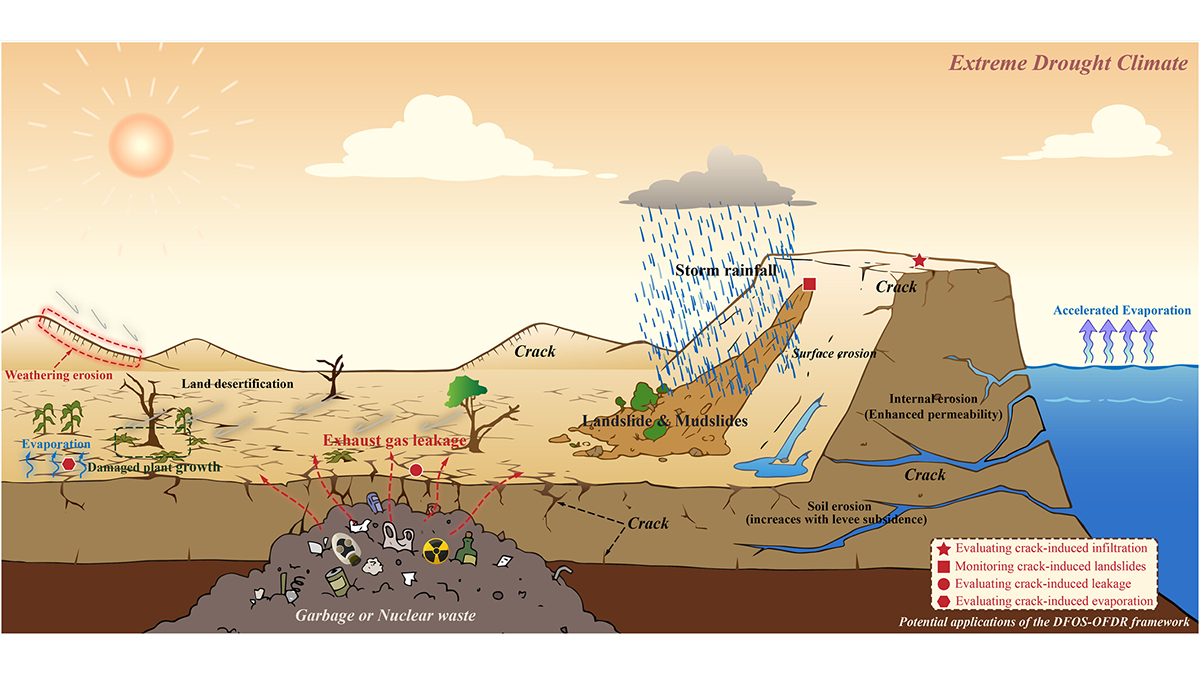Editors’ Highlights are summaries of recent papers by AGU’s journal editors.
Source: Journal of Geophysical Research: Earth Surface
Soil desiccation cracking is a complex natural phenomenon involving the interplay among soil, water, and atmospheric factors, often occurring under extreme drought conditions. Considering the impact of desiccation cracking on soil mechanical stability, soil evaporation, moisture-nutrient availability in the rhizosphere, and contaminant transport, there is growing interest in the scientific community to understand the underlying mechanisms of desiccation cracking initiation and propagation.
Moreover, many arid regions are predicted to experience higher temperatures and recurrent droughts, which can greatly accelerate the effects of desiccation cracking with implications for desertification, geological disasters, and the stability of infrastructures in these regions. However, field studies investigating desiccation cracking and its response to climate change are scarce partly due to the limitations of visual inspection methods and lack of reliable geophysical techniques to detect soil desiccation cracking behavior at different spatial and temporal scales.
Using an innovative distributed fiber optical sensing (DFOS) technique based on optical frequency domain reflectometry (OFDR), Xu et al. [2024] demonstrate the ability to locate and detect soil desiccation cracking behavior with high spatial resolution. Results from field tests clearly demonstrate the desiccation crack localization and early detection capabilities of this high-resolution monitoring approach.
The authors illustrate, for the first time, the interesting phenomenon of soil crack breathing, where desiccation cracking periodically propagates and narrows in response to climatic conditions. The discovery of this dynamic response of soil to environmental conditions will improve our understanding of moisture and gas exchange between the soil and the atmosphere and will greatly help in refining existing desiccation cracking models.
Overall, this work is an excellent example of incorporating geophysical sensing technologies to detect and to improve our understanding of subsurface processes and providing new tools and methodologies for exploring the complex soil-atmosphere interactions under climate change scenarios.
Citation: Xu, J.-J., Tang, C.-S., Yang, Y., Li, L., Zhang, H., Cheng, Q., et al. (2024). Breathing phenomenon of soil desiccation cracking: Insights from novel geophysical observations. Journal of Geophysical Research: Earth Surface, 129, e2023JF007318. https://doi.org/10.1029/2023JF007318
—Sujith Ravi, Associate Editor, JGR: Earth Surface


